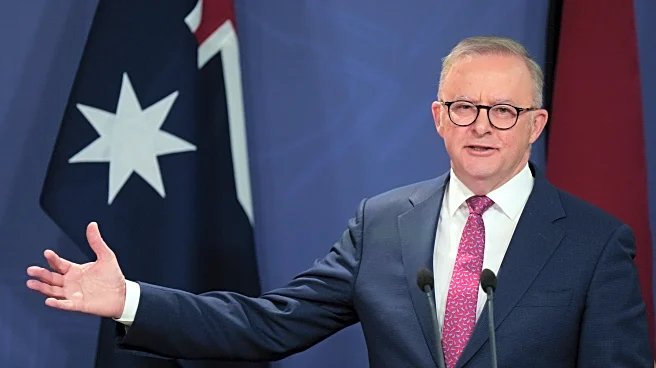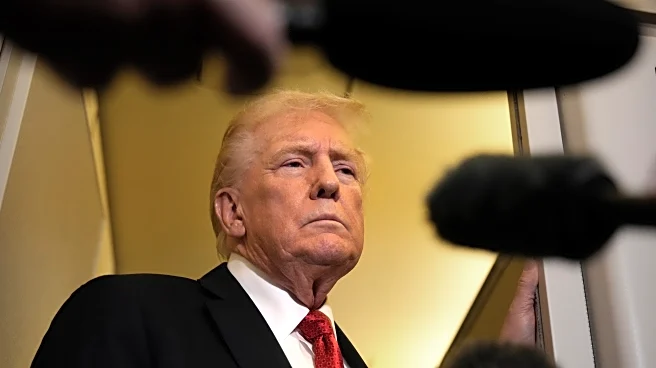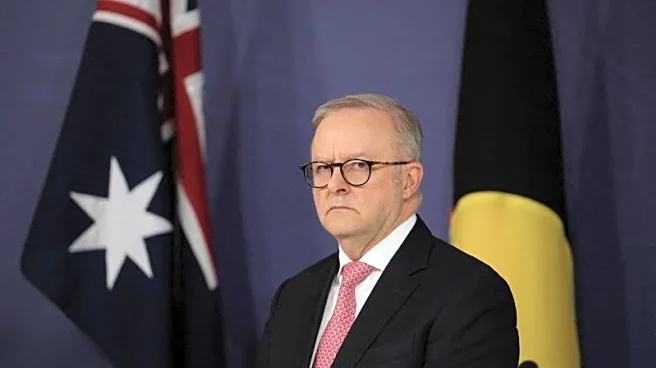What's Happening?
President Donald Trump and Australian Prime Minister Anthony Albanese have signed a significant agreement focusing on critical minerals and rare earths. The agreement, announced during a meeting at the
White House, outlines plans for projects valued at up to $8.5 billion. Albanese stated that $1 billion would be contributed by both nations over the next six months for immediately available projects. However, a White House fact sheet later clarified that the investment would exceed $3 billion in critical mineral projects within the same timeframe. Additionally, the Export-Import Bank of the United States plans to issue letters of interest for over $2.2 billion in financing, potentially unlocking up to $5 billion in total investment. This agreement aims to establish a supply chain for critical minerals and rare earths independent of China, which currently dominates the global supply chain.
Why It's Important?
The agreement between the U.S. and Australia is a strategic move to reduce dependency on China for critical minerals and rare earths, which are essential for various industries, including defense, technology, and electric vehicles. By diversifying the supply chain, the U.S. aims to enhance national security and economic stability. Australia, being one of the few countries capable of processing rare earths outside China, is a key ally in this endeavor. The collaboration could lead to increased investment in mining and processing facilities, boosting economic growth and job creation in both countries. This development is crucial for maintaining technological and military competitiveness, as rare earths are vital components in advanced manufacturing.
What's Next?
The next steps involve the implementation of the projects outlined in the agreement, with both countries expected to begin investing in critical mineral projects over the next six months. The Export-Import Bank's financing will play a significant role in facilitating these investments. Stakeholders, including mining companies and technology firms, are likely to respond positively to the increased investment opportunities. The U.S. and Australia will continue to work closely to ensure the successful execution of the agreement, potentially leading to further collaborations in other sectors. Monitoring the progress of these projects will be essential to assess the impact on the global supply chain and geopolitical dynamics.
Beyond the Headlines
This agreement may have broader implications for international trade and geopolitical relations. By reducing reliance on China, the U.S. and Australia could shift the balance of power in the global rare earths market. This move might prompt other countries to seek similar agreements to secure their supply chains, potentially leading to a realignment of global trade partnerships. Additionally, the focus on critical minerals highlights the growing importance of resource security in national policy, which could influence future legislative and regulatory decisions.













